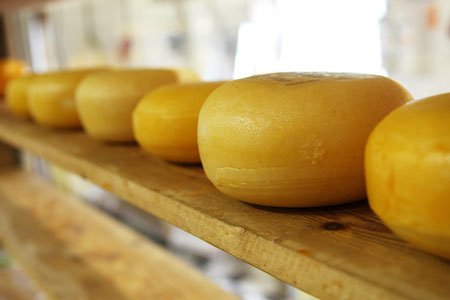 If you ever had a stubborn case of acne or you still struggle with it to this day, you’ve probably heard someone bring up dairy and the possible harming effects it can have on your skin. It’s a topic many have discussed for decades.
If you ever had a stubborn case of acne or you still struggle with it to this day, you’ve probably heard someone bring up dairy and the possible harming effects it can have on your skin. It’s a topic many have discussed for decades.
There is enough clinical evidence to suggest a correlation between dairy consumption and acne, but not enough double-blind, randomized, or controlled studies to convince everyone. One study¹ included a survey of 4273 teenaged boys in 2008. Based on their responses, the boys who consumed the most milk tended to have the worst acne. This correlation is enough for some with stubborn acne to reduce or eliminate their consumption of dairy products in hopes of clearing up their skin. In addition to the survey just mentioned, there are a number of natural and unnatural substances commonly found in dairy products that could be causing a bad skin reaction.
Hormones and Proteins, Oh My!
Most milk bought from locals supermarkets is nonorganic cow’s milk. This type of milk most commonly comes from cows injected with hormones to boost their milk production. These hormones include bovine somatotropin (BST), also known as bovine growth hormone, and insulin-like growth factor 1 (IGF-1), as well as higher levels of estrogen and progesterone. The natural hormone levels in our bodies already produce sebum, so drinking milk with higher hormone levels could make you produce excess sebum resulting in acne.
It’s not just the hormones, though. You may be allergic to certain proteins found in milk, regardless of how organic it is. Being allergic to dairy differs from being lactose intolerant which is caused by an adverse reaction to milk sugars and manifests as upset stomach or sinus congestion. An allergic reaction to the proteins causes inflammation and can come about right away or even a few days later. The inflammation from the protein aversion can result in acne or other negative skin conditions.
But Isn’t Calcium Important?
Well if you find yourself allergic to dairy or just want to see if the milk you drink is causing your acne, you still want to get your calcium. The recommended daily amount of calcium for adults is 1,000 mg and 1,200 mg for women over 50. To reach this without dairy products such as milk and cheese, try dark, leafy greens such as broccoli, collard greens, kale, spinach, and Swiss chard. Even almonds, Brazil nuts, and sesame seeds have calcium. Just a quarter cup of sesame seeds contains 351 mg of calcium, which is more than in a cup of milk.
Removing dairy from your diet isn’t a definite solution, but it you’re dealing with stubborn acne, try going dairy-free for a week. Replace cow’s milk with almond milk and up your leafy green intake. See how your skin reacts. If it gets better, it’s safe to say the hormones and proteins had something to do with it. Good luck!
C. A. Adebamewo et al., “Milk Consumption and Acne in Teenaged Boys,” Journal of the American Academy of Dermatology 58, no. 5 (May 2008): 787-93.
Source: Associated Skin Care Professionals



